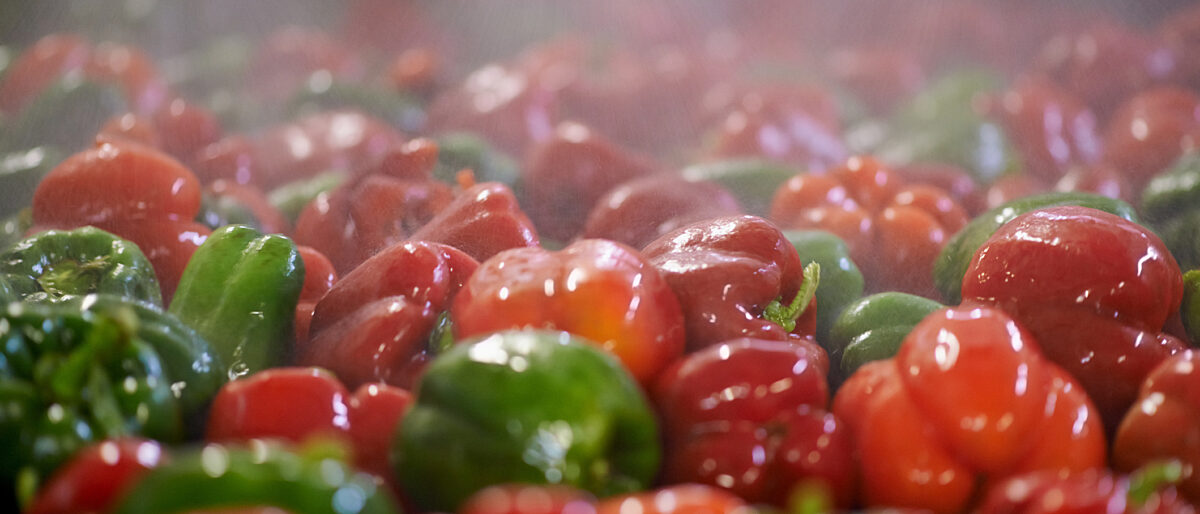Wastewater treatment in the vegetable processing industry
Funes, Navarra – Spain
Treated wastewater: 7050 m³/day
Organic load: 42.000 kg COD/d
Biogas: 4.2 MWth biogas

Joining forces for smarter wastewater treatment
Committed to limit the eco-footprint, four vegetable food processors located in the same business park joined forces and created a special-purpose vehicle for the collection and the treatment of the joint wastewater.
EPURADOS AZUD, the new joint venture between Conservas el Cidacos, Ultracongelados Virto, ENRE and Alinter awarded the design and construction of a common wastewater treatment plant to Waterleau’s local partner AEMA servicios.
Production growth and increasing flows
In 2006, AEMA designed a biological treatment process, comprising an equalization step for mixing and stabilizing the different wastewater, as well as a consecutive aerobic treatment step with submerged Membrane Bio Reactor.
In high season, the collected wastewater reached a daily peak flow up to 3.400m³/d with an organic load of 20 tons COD. With production capacity increasing, daily peak flow nearly doubled up to 7.050m³/d with a corresponding organic load of 42 tons COD by 2017.
With demand for processed vegetables surging, EMEA decided to rethink the aerobic treatment process willing to unfold the energy potential in the organic pollution, reducing the energy footprint of the 4 vegetable processors.
Waterleau designed a smart solution for maximum efficiency and minimal Total Cost of Ownership.
Unfolding the energy potential of wastewater
In partnership with Waterleau, EMEA designed a new anaerobic aerobic treatment process to be implemented in different phases
- First, an additional equalization tank was erected as an intermediate solution for handling the increasing flows. The tank design included all the preparations needed for upgrading the tank into a BIOTIM® UASB in a later stage, making it possible to switch from an aerobic into an anaerobic process when appropriate.
- A KROFTA® DAF was implemented as a pre-treatment step for the UASB, separating the fat, oils and grease. These unwanted solids are to be removed for the protection of the biological and anaerobic processes in the UASB reactor sludge blanket.
- The anaerobic digestion process generates methane which is used to fuel the generator producing heat and power. To protect the combined heat and power generator unit from corrosion, the methane needs to be treated first. A BIOTIM® desulphurization unit removes the corrosive substances from the biogas.
Reduced Cost of Ownership
Instead of expanding the initial aerobic treatment process and increasing the plant footprint to meet the increasing flows, the new anaerobic-aerobic treatment takes full advantage of the energy potential hidden in the wastewater organic load.
The smart combination of the KROFTA® DAF and BIOTIM® UASB implemented by EMEA contributed to a significant reduction of the water treatment OPEX since 4.2 MWth energy is recovered from the digestion process.
Other Cases

A capex-free upgrade for Martens Brewery
A new treatment strategy materialized in an out-of-the-box approach and a long-term partnership.

Sapphire Finishing Mills

Compact drinking water plant in Khemmiset
Doubling capacity to meet the demands of a growing population.
Find your local contact
Our expertise is always within reach. Digital communication has cut long distances short, but we advocate the traditional way of sharing insights.
Contact us today. We are looking forward to help you reach your sustainable development goals.




